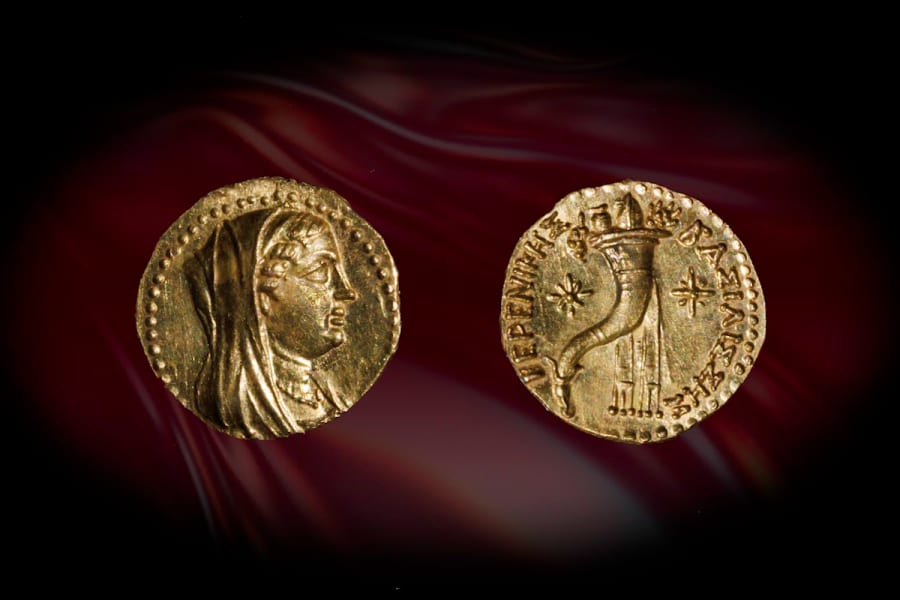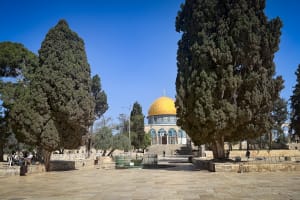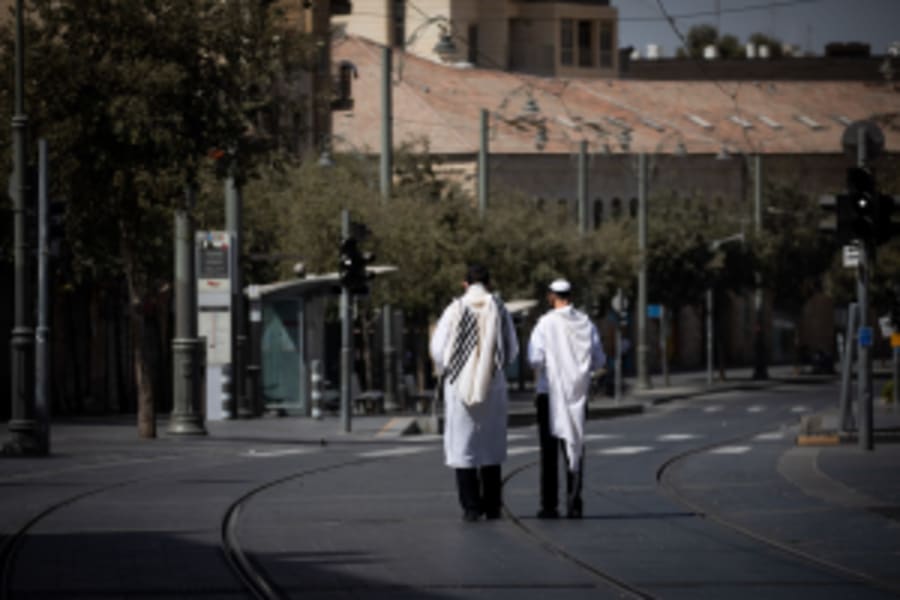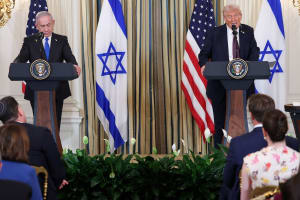Small but significant: Ancient Egyptian coin reshapes view of Jerusalem between Temple periods

An ancient gold coin featuring Egyptian Queen Berenice II has been discovered in Jerusalem’s City of David excavations, causing much excitement among experts. The rare coin is small in size, but significant in shaping the way historians understand the city of Jerusalem following the destruction of the First Temple.
The coin representing Queen Berenice, who lived from 246–222 B.C., is one of approximately 20 similar coins known to exist, and dates back some 2,200 years. It is the first such coin to have been discovered in a controlled excavation in a proper archaeological context. It was found in the Givati Parking Lot excavations conducted by the Israel Antiquities Authority (IAA) in the City of David National Park.
Dated to 246–241 B.C.E., it was minted in Alexandria for the queen during the reign of her husband, Ptolemy III, the Hellenistic ruler of Egypt. Experts believe the coin could have been part of a special series paying bonuses to Egyptian soldiers returning from the Third Syrian War, fought between the Ptolemaic Kingdom of Egypt and the Seleucid Kingdom of Syria.
One side of the coin shows Berenice in a diadem and veil, with a necklace and the other shows a cornucopia, an ancient symbol of prosperity and fertility, with two stars on either side. The inscription in Greek reads “BASILISSES” which means “of the Queen,” a rare inscription on coins from that period. Queen Berenice appears not merely as a consort of the king, but seemingly as a ruler in her own right.
The coin is only a small denomination, a quarter-drachma, but made of pure gold (99.3%) and is worth a great deal to those piecing together the history of Jerusalem.
Previously, it was thought that Jerusalem was a small, marginal, and economically weak town after the destruction of the First Temple, but this discovery from the Hellenistic period suggests otherwise.
Rivka Langler discovered the coin and shared the excitement of the find, which quickly spread throughout the whole excavation team.
“I was sifting the excavation soil when suddenly I saw something shiny. I picked it up and realized it was a gold coin. At first, I couldn’t believe what I was seeing, but within seconds, I was running excitedly through the excavation site. I’ve been excavating in the City of David for two years, and this is the first time I’ve found gold! I always saw other excavators discovering special finds, and I kept waiting for my moment – and now it finally arrived!”
Dr. Robert Kool, Head of the IAA's Numismatics Department, and Dr. Haim Gitler, chief curator of Archaeology and Curator of Numismatics at the Israel Museum, have been studying the coin.
“As far as we know, the coin is the only one of its kind ever discovered outside Egypt, which was the center of Ptolemaic rule,” said Kool.
Women, most notably Cleopatra, only appeared occasionally on Ptolemaic coins for nearly 300 years (305-30 B.C.E.), but this coin was minted during the lifetime of Queen Berenice, which may be an indication that she had exceptional status and political power.
Kool and Gitler described the coin as having “extraordinary scientific importance.”
Yiftah Shalev, director of the excavation on behalf of the IAA, together with Efrat Bocher of the Center for the Study of Ancient Jerusalem, stated, “The fact that such a rare gold coin was discovered in Jerusalem during the time when it was under Ptolemaic rule provides a fascinating glimpse into the city’s status in those years and possible relations between the Jerusalem authorities and the Ptolemaic Empire. The coin carries broad implications regarding Jerusalem’s development after the destruction of the First Temple,” they said.
“Together with other mid-third-century B.C. discoveries, a picture of Jerusalem recovering from the Babylonian destruction is emerging. It seems that during the Persian period the city grew stronger under Ptolemaic rule,” they continued, adding, “Jerusalem in the centuries after the destruction of the First Temple was not desolate and isolated, but rather a city in the process of renewal, reestablishing ties with the dominant political, economic, and cultural centers of the period.”
Israeli Heritage Minister Amichai Eliyahu is enthusiastic about the significance of the discovery: “Jerusalem never ceases to surprise. The rare coin from the City of David may be a small find, but it carries great significance for understanding Jerusalem. Excavations in the City of David uncover entire chapters of the city’s history – from the glorious days of the Kingdom of Judah to the time after the destruction of the First Temple and the exile. After 2,000 years, we have returned to our capital, and now we are privileged to uncover its rich past,” he said.
The unique coin, together with gold jewelry found in the same location, will be presented to the public as part of the 26th Annual City of David Research Conference in early September.

Jo Elizabeth has a great interest in politics and cultural developments, studying Social Policy for her first degree and gaining a Masters in Jewish Philosophy from Haifa University, but she loves to write about the Bible and its primary subject, the God of Israel. As a writer, Jo spends her time between the UK and Jerusalem, Israel.
You might also like to read this:

















